- Home
- ILIL ARBEL
ANCIENT ALIENS: MARRADIANS AND ANUNNAKI: VOLUME ONE: EXTRATERRESTRIAL HOLIDAYS Page 2
ANCIENT ALIENS: MARRADIANS AND ANUNNAKI: VOLUME ONE: EXTRATERRESTRIAL HOLIDAYS Read online
Page 2
Refreshments
Of course, a Marradian Mai Tai, comprised of any spiced light-colored alcoholic beverage, dried Yi grapes and a splash of Yvoa Brandy, is considered essential. Beware, two of these and you might find yourself talking to Cimric! For wine, consume ample amounts of Tivinian yellow or, for those wishing something less taxing on the body the next morning, Diluted Duck Wine. Children may have this, if limited to one. If they’re not clutching their stomachs and moaning over too many Shorties, they might like some Sweetened Ein Spring Water with a succulent Fa Twig.
After Dinner
The Ashar Marrad tradition demands that the D’ua tell one glorious story of Marradian superiority, whether of Egok the Cross-Limbed, Lod the Large, Cimric himself or any of the many heroes. This may go on for hours and should be accompanied by music, Rubbed Fessian treats and Red Tea.
THE DO-NALD, LEADER OF THE MARRADIANS
The leader of the Marradians is called The Do-nald, a position of ancient origin. The Do-nalds are chosen carefully, behind closed doors of course, by The Council, a group of elite Marradians including key members of government, military, media and, most importantly, corporations. Traditionally, one must first prove themselves as an Imperial Chancellor.
Yet the first Do-nald was a renegade Anunnaki.
The First Do-Nald
As everyone knows, the Anunnaki are tall, handsome, and dark. There are no pure Anunnaki with blond hair or blue eyes. There are no short and plump Anunnaki. If the strange event of a genetic aberration occurs, it’s now deemed appropriate to correct it before the baby is born.
Not because the Anunnaki are so concerned with their own beauty, but because they realize that being different might stress the young developing mind, and why waste effort on that when so many more important lessons are to be learned? But when the baby who was to become the first Do-nald was born, millennia ago, they had less experience in the matter and did not correct his genetic aberration.
The future Do-nald, whose name was Aenku-Murad, came out of his tube smaller, plumper, and lighter than any Anunnaki. As he grew up, he turned into a stocky, even slightly overweight young man, with light hair and almost orange complexion. His eyes were of light, undefined color. Of course, the Anunnaki treated him as an equal after raising him with love and understanding, but Aenku-Murad proved different in more than just looks.
Becoming the Do-Nald
As many readers know, the Anunnaki do not have external genitalia. Their sexual relationships, which are called the Union, are accomplished by the “mingling of the lights,” said to be the most enjoyable experience anyone can ever have. Unfortunately, Aenku-Murad found, to everyone’s consternation, that he was not able to emanate any light. Worse, during puberty, the poor youth even developed somewhat incomplete external genitalia.
That part of his body was useless – no Anunnaki woman could reciprocate. Aenku-Murad vainly tried to mate with three kindly and affectionate Anunnaki females. But the lights never fully worked and the women parted from him since, without the Union, an Anunnaki couple is not truly married and cannot live together.
Aenku-Murad was hiding another secret. Deep down, he desperately wanted to wear women’s clothes; he simply could not stand wearing men’s attire. You would say that since the Anunnaki wear robes, it made little difference, but this was not so. Their way of dressing is not unisex, and the differences between male and female clothes, though subtle, are important.
The life-changing moment in the future Do-nald’s life happened during his fourth attempt at marriage. His mate entered their bedroom to find Aenku-Murad trying on her clothes, parading back and forth in front of a large mirror. With the deep empathy and understanding that only an Anunnaki can display, she was neither angry nor shocked and was determined to help him.
It was fortunate that the lady was well versed in Marradian culture (she taught Marradian Studies at the local Academy) and knew all about their habits of wearing women’s clothing. She also knew that Marradians did not use the mingling of the lights for their union. Putting all the facts together, she told Aenku-Murad her only conclusion: he was a Marradian hybrid. All those years of secret agony faded away and, with tears in his eyes, Aenku-Murad thanked his kind friend, materialized a few perfect Marradian outfits, and teleported himself to Marradia’s largest city, Ma’la.
Easily mingling in the population (since many Marradians looked like him) Aenku-Murad had no trouble adjusting. He soon discovered a superb talent for clothing design, and eventually established one of the most prestigious fashion houses in Marradia. He underwent several medical procedures and acquired the external genitalia of a Marradian male – the pleasure bubbles – and so could marry. Aenku-Murad became an incredibly successful businessman and quickly rose through the ranks of the Marradian elite until he achieved the enviable role of Do-nald.
The Current Do-Nald
When Oyveyus-Truffle, the current Do-nald, was chosen, the populace was truly overjoyed by his almost uncanny resemblance to the first Do-nald; the superstitious populace thinks it was “kiluna, kalana,” (meant to be).
The people are particularly pleased by Do-nald Truffle’s occupation. He is the owner of many corporations, reigning over a truly vast commercial empire, including his personal favorite, a line of women’s lingerie, which showcases His Lordship’s matchless talent for designing delicate, elegant underwear, which he personally showcases on all High State Holidays such as Cimric’s Birthday.
Celebrating the Do-Nald
Celebrating the naming of a new Do-nald kicks off a restrained one-day celebration. Marradians are careful about preserving their past and will do nothing to usurp the memory of their ancestors. It’s more a celebration of the strength of Marradian traditions then the power of one man or woman. An unproven leader isn’t put in the same category as Lod, Egok, or countless Marradian legends. As the old Marradian saying goes: “Lech zei a’ch” (Let’s see first).
However, the Do-nald does decide which will be the main fashions for the upcoming season of his reign, from dresses and shoes to handbags and scarves. That doesn’t mean other styles are banned, but it’s wise for the socially ambitious to select a basic wardrobe of what’s commonly called The Do-nald Dress. Especially if you’re attending the Go’ad, or Bellow, where the Do-nald takes the oath of office upon Mount Cimric.
That ceremony is beamed throughout the Marradian Galactic Empire. The Do-nald wears the gown of his choice, usually with a Persippian necklace; earrings are optional.
His speech is always humble. Since Marradians are arrogant and paranoid, they’re instantly suspicious of anyone who tries to surpass them, particularly someone who can make them Go Poof (ceremonial instant murder by telekinesis). Past Do-nald speeches have greatly varied depending on the circumstances of war and peace; they’re always brief. But the simple ceremony remains the same.
The Do-nald ascends alone up the fifty two steps -- the number of days Lod, the second Do-nald, wandered in the desert sustained by yak urine -- sprinkling sand and sipping Tivinian yellow wine (to replicate yak urine) until he stands at the top of Mount Cimric before The Lonely Light, or L’ee Huun Ji.
The Do-nald kneels and begs Cimric for wisdom.
Vu na ui Cimric
Help me, Cimric
If the candle goes out, that means Cimric is displeased by the selection of the new leader and a pack of Keluvian curs will run up the steps and devour the Do-nald; the Council must choose someone else. That has only happened once.
Assuming Cimric shows his approval, the Do-nald rises and says the Blessing of All, the Shem Tonah.
Marradians po
Marradians pa
Marradians ui
Marradians uo
Marradians one
Marradians all
Marradians in me
Marradians in you
The Do-nald now descends and greets his guests as the new leader of the Empire.
The Drink
While there is a v
ast range of foods at the Bellow Party from all over the Galaxy, there is just one drink that may be served. In honor of the first Do-nald and his complexion, all celebrants throughout the Empire must drink the Owaa, or Orange.
Owaa. (Serves six). Crush half a bucket of ice cubes. Pour over half a cup of Segossian Sugar and let sit for fifteen minutes. Add a quart of Shvitzian Rum, stirring slowly. Put aside for five minutes. Pour a pint of Edi Orange Lime into a small sauce pan and bring to a frantic boil until the liquid has evaporated. Quickly add the remaining syrup to the mixture and stir vigorously. Pour into chilled glasses and garnish with stuffed Enta Olives.
CIMRIC’S BIRTHDAY,
CIMRIC B’WA
Before we explain how Marradians celebrate the Cimric B’wa, the “birth” of Cimric, let’s explain who he is.
Cimric the God and the Mortal
Cimric, the God of the Marradians, is a highly complex deity, but we actually know him well on Earth under many names and guises. Yaldabaoth, Lucifer, Satan, Samael, the Devil and many others have all been derived from our memories of Cimric. The ancient Gnostics were the only group on Earth that had truly grasped the nature of Cimric. They have a vast body of literature about the Deity, calling him the “Demiurge,” which means “half creator.”
The Anunnaki believe in the high and supreme God which they call All-That-Is, or ATI. This God is not an anthropomorphic representation of a human-like being, but a pure spirit without gender, encompassing everything that exists in the multiverse. He is not what we would refer to as “a creator” since He does not actively create. Rather, He emanates a mysterious substance that has brought everything that exists or has ever existed into being throughout the multiverse. This God cannot be seen, cannot be contacted, does not listen to prayers, and is altogether beyond comprehension.
The Jews are the nearest group to understanding this concept, notably through the medieval Kabbalah, but imperfectly since they still pray to Him. However, the idea is well expressed in the Bible when God says “I am that I am” when Moses inquires who is talking to him through the Burning Bush.
Also, Jews do not allow any pictures of God to be painted or sculpted, remaining close to the concept of the invisible All-That-Is, while Christianity encourages the magnificent paintings we see in medieval and Renaissance art, similar to the great body of Marradian religious art depicting Cimric. The painting, Simric’s Toenails, by Veshi Tu, is the most famous piece of art in the Empire.
The Anunnaki believe that certain beings mediate between All-That-Is and the physical universe. One of these beings, Eezeat, gave birth to Cimric; since he emanated directly from her, not from the perfect substance of All-That-Is, he was born flawed.
Eezeat was one of the entities who mediated between All-That-Is and the world. Her fall was due to an overzealous approach to understanding ATI. She came too close to the forbidden source, was severely burned, and lost her senses in pain and suffering. Starting to wander aimlessly around the universe, she spent time with inferior beings (including some proto-humans which were discarded by the Anunnaki as unsuccessful experiments).
This association caused her emanations, which were already flawed, to mix with the aura of those brutish humanoids. Cimric was born with several physical and mental shortcomings. She was too mentally challenged, at that time, to care for him herself, but she was a good mother and made sure to place him with some other entities who raised him kindly. It is unfortunate that he grew up believing he was the supreme God, but the harm was done and could not be undone.
Cimric took it upon himself to create many worlds. He denied the existence of All-That-Is; the Marradians accept Cimric’s claim to being the ultimate, authentic God, while the Anunnaki see him as a mere demon.
There are many stories by humans who claimed to have seen Cimric. The manifestations seem to vary. Some see him as the most beautiful being they have ever seen. To others, he appears to look like what we think of as an ugly devil. Several individuals described him as “funny looking,” while others saw him manifest as a fiery serpent.
The Prayers
There are approximately 3,200 prayers devoted to Cimric. Upcoming books will dive more deeply into the Marradian and Anunnaki religions, but for this work, we will only focus on the three prayers for Cimric’s Birthday.
The first is said at sunrise, a simple ancient blessing dating back tens and tens of thousands of years called Greeting You:
Shvarner etz Cimric sole
Gilgagesh etz Cimric sole
Hada ein da
Hada ein lub
Hada ein ri
Cimric’s rays warm me
Cimric’s smile warms me
Protect my heart
Protect my mind
Protect my life
The second prayer, the very touching Stay Cimric, also tens of thousands of years old, is recited at sundown:
Do ta Cimric
Do ta Cimric
Studi co mo
U ferlem
Stay with me Cimric
Stay with me Cimric
Please don’t go
I am afraid
As the family gathers around the evening meal and celebration, they say the third prayer, My Cimric:
Ein Cimric
Ein Cimric
Yo rech ju
Wi nar
Tro ger cia pann
My Cimric
My Cimric
You love us
We love you
Forever is the bond
The Celebration
Unlike the Marradian New Year’s game inside Cimric’s Scrotum, his birthday is celebrated more somberly. Foods, games and dress reflect the serious tone.
Cimric’s Birthday is the only Marradian holiday where the dress is all black, including hair, makeup, fingernails. As well, the tablecloths, plates and silverware, glasses, anything that is used must be in black. Every Marradian household proudly has its Birthday holiday ware stained black with Agi dye.
The Game
Cimric’s Heart touches upon the very core of the Deity. Each member of the family chooses to be a different part of Cimric’s Heart. This isn’t about a physical aspect of the six chambered muscle, but the Essence. It’s as if a Christian were to submerge themselves into the Holy Trinity. Blasphemy, but not for Marradians.
For this one glorious day, a Marradian feels what it’s like to be Cimric. One aspect of Cimric’s Heart is chosen: Justice, Strength, Mercy or Vengeance. The celebrant re-enacts how Cimric demonstrated such Essences like sparing ten percent of the Shians to serve as slaves as an act of Mercy for their cowardly defeat against a smaller Marradian fleet. Or perhaps destroying the 10 Fissian capital cities as Vengeance for the insult to the Marradian Ambassador’s hairstyle.
For a race obsessed with their looks, Cimric’s Heart doesn’t permit any special clothing or makeup. Very simply, the celebrant is as they are to be who Cimric is when he was.
The Food
In contrast to the joyful, glutinous behavior of Marradians, the subdued culinary Cimric’s Birthday resembles an Anunnaki vegetarian meal. According to the holy text The Livinian, Cimric, when roused to a state of temporary mortal consciousness, could eat only berries until he was nearly five years old.
Ch’ino Berries Pie. Remove the stems and set aside. Douse a pound of Ch’ino Berries in cold, unseasoned water and refrigerate. Saute the stems in plain Goni oil until translucent. In a separate bowl, mash half a dozen Squins (mostly closely resembles an Earth banana). Combine the stems and squins, layering a shallow baking dish. Carefully add the berries, making sure they are not split. Bake at 375 degrees for forty minutes.
The Songs, the Hymns
The Marradian hymn Simric’s Brow is accompanied with discordant clapping and foot stomping, as if two lifeforms – one Marradian, the other Cimric – live within the prayer simultaneously.
Kiss my brow, beloved Cimric
Spin us
In your broad embrace
Give us
All you have to know
We are fools
In this show
Risha ein plutz, bara Cimric
Shvin ju
Io ur ni evech
Hia ju
Flech ju bart
Vech phlegm
Cot der klem
EGOK THE CROSS-LIMBED
Perhaps no Marradian holiday sums up the complexity of its people like the birth of Egok the Cross-Limbed, the great Law Giver who overcame a severe physical challenge and forced others to reassess the meaning and the definition of a Marradian warrior.
Unfortunately, he did not convert everyone.
THE EARLY YEARS
Egok was born into a leading merchant house, the Finns. His parents were wealthy, haughty and raised Egok in that mode. He was an unpleasant child, eager to beat a servant or animal for no reason. If anything, Egok’s arrogance increased during the summer holidays when his family would journey to one of their many homes in the Pileggian Star System.
Egok was taught, as was every Marradian child, rich and poor, of his superiority. A real Marradian doesn’t talk. A real Marradian acts. A real Marradian takes.
The story of Egok and the Pileggian sailor on Uta 6 is truly heartbreaking. And disgusting. Egok’s father Pov, a man whose shadow strutted, ordered Egok to learn how to sail a boat. Egok had no idea how to do that but, as a Marradian, that didn’t matter. The knowledge was within.

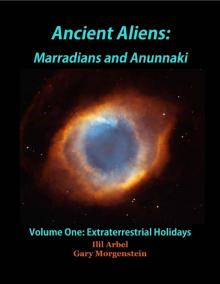 ANCIENT ALIENS: MARRADIANS AND ANUNNAKI: VOLUME ONE: EXTRATERRESTRIAL HOLIDAYS
ANCIENT ALIENS: MARRADIANS AND ANUNNAKI: VOLUME ONE: EXTRATERRESTRIAL HOLIDAYS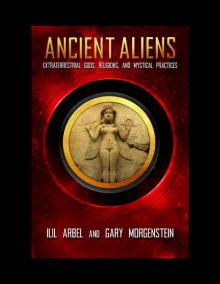 Ancient Aliens_Marradians and Anunnaki_Volume Two_Extraterrestrial Gods, Religions, and Mystical Practices
Ancient Aliens_Marradians and Anunnaki_Volume Two_Extraterrestrial Gods, Religions, and Mystical Practices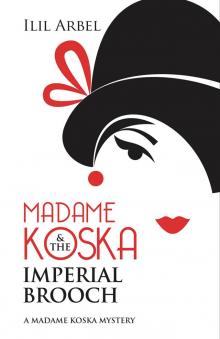 Madame Koska & the Imperial Brooch
Madame Koska & the Imperial Brooch Ancient Aliens: Marradians and Anunnaki: Volume Two: Extraterrestrial Gods, Religions, and Mystical Practices
Ancient Aliens: Marradians and Anunnaki: Volume Two: Extraterrestrial Gods, Religions, and Mystical Practices Miss Glamora Tudor!: The New Chronicles of Barset: Book One
Miss Glamora Tudor!: The New Chronicles of Barset: Book One The Cinnabar Box (Guardians of the Earth)
The Cinnabar Box (Guardians of the Earth)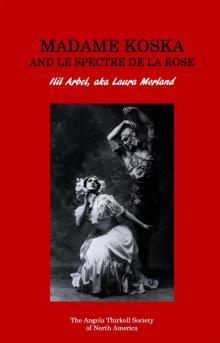 Madame Koska and Le Spectre de la Rose
Madame Koska and Le Spectre de la Rose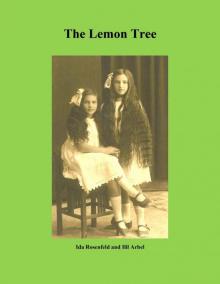 The Lemon Tree
The Lemon Tree Their Exits and their Entrances: The New Chronicles of Barset: Book Two
Their Exits and their Entrances: The New Chronicles of Barset: Book Two